Boston And Sandwich Glass Company 1851-1890
Reprinted from "Crown Jewels of the Wire", May 1989, page 4
Reprint of information in a
Sandwich Glass reference book submitted by John deSousa. Photos by John
McDougald from collections of Rick Baldwin, Dick Bowman & James Colburn.
During the early 1850's, there was a growing demand for arrestors to protect
buildings from fires caused by lightning. As early as 1851, glass insulators had
been made at Sandwich. George W. Otis of Lynn, Massachusetts, had patented an
insulator that was used for attaching lightning rods to buildings. The patent
consisted of a solid glass cylinder, a metallic point or conductor, and a
wooden or metal collar. The three parts put together made up the insulator,
which was fastened to the building by screws in the collar. The purpose of the
glass cylinder was to prevent electricity that struck the lightning rod from
entering the building. A wire ran from the bottom end of the lightning rod to an
iron post driven into the ground, where the lightning would be discharged.
Three types were made, two of them consisting entirely of glass. They were
frequently made from recycled glass, called cullet, which accounts for their
great variety of colors. These insulators have been dug in very large quantities
at the site of the factory, the earliest bearing a patent date of August
26,1851. These fragments are easily identified by the name "OTIS"
molded in the side. Photographs that follow cover both the insulators made by
the Boston and Sandwich Glass Company, as well as insulators and conduit made by
the Electrical Glass Corporation.
THESE SIMPLE HINTS WILL HELP YOU IDENTIFY SANDWICH INSULATORS:
No threaded insulators were made at Sandwich.
Look for the name
"OTIS" molded into the side of the insulator.
Some early insulators
have only the 1851 date molded into them.
Look for insulators with wooden
collars. Only Otis insulators were fastened to the building by this method.
Look
for insulators with the metal cap. This was part of Otis' patent, and only fit
Otis insulators.
OTIS LIGHTNING ROD INSULATORS
1-3/4" Height x 1-3/4" Diameter
1851
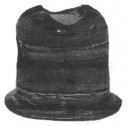
The picture (page 4) suggests the wide range of colors in which these
insulators were found. This was due to the variety of used glass that was
recycled in their making. This original Otis insulator was the first attempt
to ward off the power of an electrical charge from lightning. The insulator was
held against a building by a wooden collar. A steel rod was passed through the
hole, as shown in the insulator on the left. This rod stood vertically 18"
above the highest point of the building. If it was struck by lightning, the
force of the strike would break the glass or shatter the wooden collar, and the
rod would carry the electrical charge harmlessly to the ground. This was a fine
principle in theory, but in reality it did not work.
LIGHTNING ARRESTOR INSULATOR
4" Height x 1-3/4" Diameter
1851
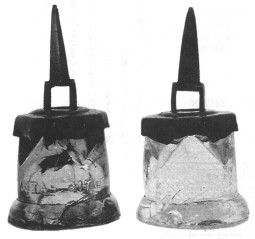
George W. Otis is credited with improving lightning rod efficiency. The
insulator in this photograph was patented by Otis. The collar held it to the
building. The glass acted as the insulator and the metallic cap held the
lightning rod. The two points diverted the power of the strike away from the
building. Any power that was not diverted was carried down the ground wire to
the earth.
GROUND WIRE INSULATORS
1-3/4" Height x 1-3/4" Diameter
1851
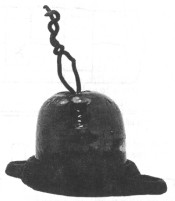
The theory that a building could be protected against lightning was a sound
one. It was soon realized that a ground wire from the lightning rod to the
surface of the ground was necessary. The insulators attached to the side of the
building were used to carry the ground wire to the earth.

Early attempts to carry a ground wire down the side of the building worked
only as long as the building was not struck by lightning! It was soon learned
that the loop that held the ground wire in place carried the charge back to the metal screws and
collar. Improvements came rapidly in the 1850's, and within months, excellent
insulators were perfected.
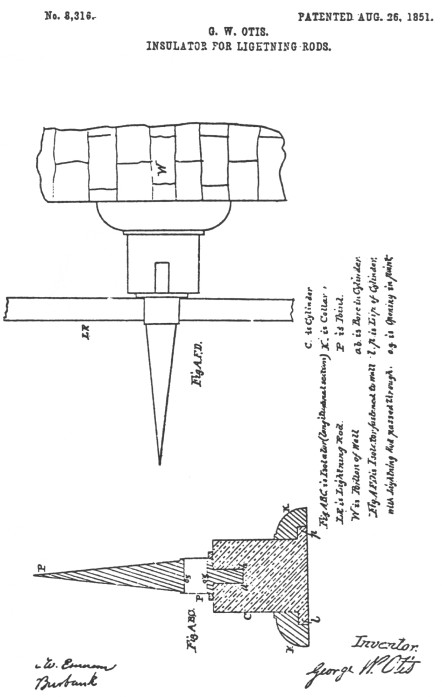
Large Image (105 Kb)
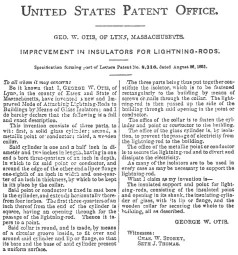
Medium Image (104 Kb)
Large Image (544 Kb)
LIGHTNING ROD INSULATOR
2" Height x 3/4" Inside Diameter
1851-1860
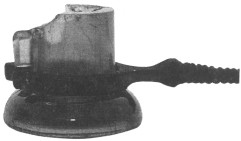
This is another method of holding a lightning rod away from the building. The
clamp screwed into the wall and held the insulator in an upright position. The
steel rod slipped through the hole and was grounded away from the building. The
same insulator had a second use. It was turned horizontally, as illustrated, and
put through a wood wall, allowing the wires to come in from an angle. The
insulator prevented chafing, and if the wire was struck by lightning, would
prevent fire.
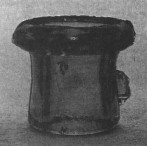
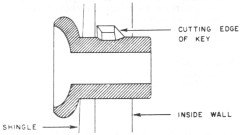
POLE-TOP INSULATOR FRAGMENTS
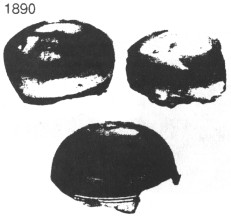
The insulator was used as a high-tension
insulator and was the largest one produced by the Electrical Glass Corporation.
The amount of debris and the poor quality of the glass would indicate that there
was more than the usual amount of difficulty removing the insulator from the mold. Insulator experts tell us that few of them were ever put to use.
The early top-of-the-pole insulators were intended to carry a wire on each
side of the insulator. It proved to be too close together. The stretching of the
wire and its flexing in the wind made the insulator useless, and few were made.
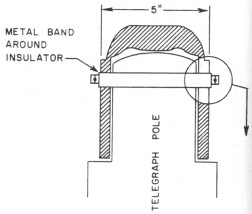
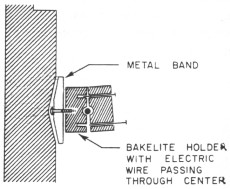
CROSSARM INSULATOR
4" Height x 2-3/4" Diameter
1890
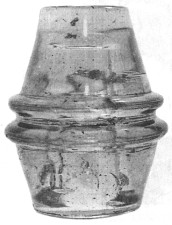
This was the most common of the insulators made by the Electrical Glass
Corporation and was used to carry electrical wires. The insulator had a hole up
through the center that was not threaded. A series of wooden pegs were fastened
to the crossarms of the pole. The insulators were placed over the peg and driven
on with several blows of a rubber mallet. The wire carrying electricity was
fastened to the insulator by means of a wire that wrapped around the insulator
as illustrated.

Top view of the insulator. This was the most
successful of the insulators
made in Sandwich.
INSULATOR MOLD
Over the years many people have dug at the Sandwich Co-operative Glass
Company hunting for fragments to help identify what were made there. In the
early 1970's, over eighty years after this glass company made the samples, a
digging team located this insulator mold in front of the furnace. It is shown
here filled with plaster of Paris to distinguish the profile of the insulator.
It is not known if this is one of the actual insulators made for the Electrical
Glass Corporation. No insulator of this shape has been dug from any of the
factory sites in Sandwich.

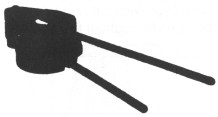
Here is the mold shown in its entirety,
with the handles used to open and
close it.
CONDUIT FRAGMENTS
4" Inside Diameter
5" Outside Diameter
1890
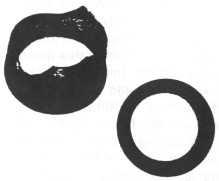
The Electrical Glass Corporation held patents on conduit. The city of New
York ordered them in great quantity for subterranean construction. Here is a
conduit fragment with a 4" opening. Each section was 30" long. One end
of each section was made concave on the side, to fit tightly against the convex
outside of the next abutting section. Each concave end was thickly coated with
heavy waterproof tar, and the convex end of the next section was hammered into
place, sealing the joint. Allowed to dry, this would make a watertight
compartment, using glass as the conduit. Wire was fed through the 4"
opening from street to street, providing electrical and telephone services
throughout the city.
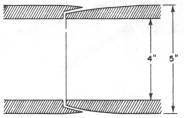
Cross section of electrical conduit,
showing it in sealed position.
CONDUIT
FRAGMENT
2" Inside Diameter
5" Outside Diameter
1890
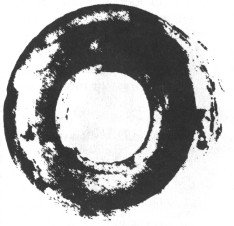
This picture shows the very thick walls of the 2" conduit. Attempts were made to put the glass conduit
together with threads. We believe this method failed, because there are few
fragments and no mention in our records of mass production. Patent infringements
were charged by other companies, causing the rapid decline of the Electrical
Glass Corporation.
| 